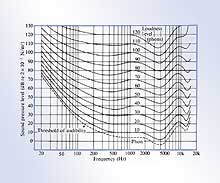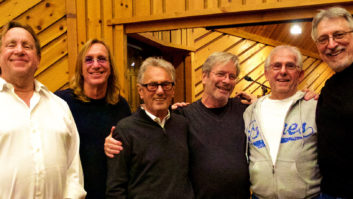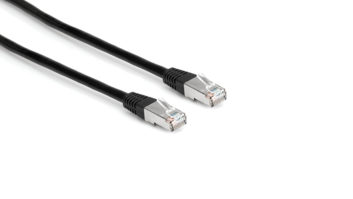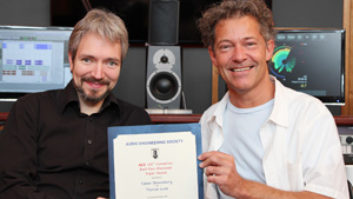
Editor’s note: Mastering engineer Greg Reierson, who owns and operates Rare Form Mastering in Minneapolis, submitted the following essay reflecting on the loudness wars of recent years and the future of music delivery to Mix magazine.
A Fletcher-Munson Loudness Curve
I was at the AES show in San Francisco last November and I came back with renewed hope for the future of the music industry—not just from a business perspective, but from a recording-quality perspective as well. Besides the usual discussions about gear and recording techniques, there was a lot of talk about high resolution digital downloads surpassing CDs as the dominant delivery format within the next few years. Optimism is growing as more and more engineers are seeing a way to finally get past the loudness war.
Wait, the loudness war is over? Well, there are still plenty of soldiers who still haven’t gotten the message but the wheels are in motion. It’s just a matter of time now.
Consider this: The current loudness war is a product of the CD format and the ability to play a song from CD “A” next to a song from CD “B”. Since the music industry has never adopted loudness standards (like the long established standards in film and broadcast) we’ve been left to fight it out for ourselves. No artist wants his or her music to sound quiet next to other music. It’s human nature. So just to make sure, we’ve made ’em loud—louder every year.
But here’s the thing: The future of music delivery is not the CD. Sure, the CD will be around for selling offstage and at gift shops, but the CD is on its way out as the dominant delivery format. How many young music buyers actually buy CDs? How many artists’ primary delivery format will be CDs when the recording school graduates of 2011 are in the prime of their careers 10 years from now?
File based delivery is the future. Whether it’s iTunes, Pandora, iPods or whatever, file based playback is how most people listen today and it will completely replace the CD in the very near future.
Okay, but how will this end the loudness war? Isn’t shuffle mode on my iPod about the same thing?
The solution is to find a way to automatically adjust the playback volume on a song-by-song (or album-by-album) basis. This can be accomplished by running an algorithm that determines the perceptual level of a given song or album and then digitally scaling the volume up or down to a standardized center. Many media players have crude implementations of this idea already in place. iTunes has Sound Check. Other players use Replay Gain, etc. While current implementation of these processes has room for improvement, more sophisticated software has been developed and the next generation of media players will be much better at it than they are today. These are not dumb processes that just apply a compressor or leveler. These are sophisticated algorithms that take a song’s (or a whole album’s) long-term dynamic attributes into account. With this sort of system in place, an early ’80s metal song, for example, will play back at the same perceived loudness as a metal song from this year. And more to the point: a crushed-for-the-sake-of-loudness mix will play back no louder than any other mix from a comparable genre in one’s library.
Think about that for a second. In fact, try it. Find a great sounding, un-crushed song of your choice. Something with punch and dynamics. You might have to go back a decade or two. Now find a modern, loud song of a similar genre. Put them both in your workstation and adjust the gain until each plays back at the same apparent loudness. What will you hear? You will hear that the dynamic song moves some air and has punch and excitement, while the loud mix has been robbed of its punch by the process that made it loud in the first place.
As more people start to use media players that are equipped with these new tools, and when they understand that a well-implemented solution has no compromises, over-compression and over-limiting purely for the sake of making loud CDs will become just a bad memory. Production techniques will serve the artistic needs of the music rather than sacrificing quality for the sake of loudness. This is how we will put an end to the loudness war and bring great sounding mixes back to every genre.
Besides lots of great albums from the last decade (and many re-masters in every genre) that have been run through the loudness mill, there will be two final casualties of this war. First are the software companies who are making a killing selling loudness in the form of a plug-in. Those products will soon be obsolete. Put your “maximizer,” “limiter” and “clipper” team to work on better things, such as algorithms that can better measure loudness for the next generation of media players.
The second casualty is the mixing or mastering engineer whose only real selling point (and sometimes only actual skill) is making songs louder. The jig is up! There’s just no value in that line of work any more. You’ll have to learn how to make songs sound better, which is not quite as easy as just making things louder.
The rest of the audio engineering and music listening world welcomes the end of the war. Now we can all get back to our regularly scheduled sessions, making great sounding music without that slap in the face at the end. Now recording and mixing engineers can focus on sound quality without having to push mixes past the point of reason. And now mastering engineers can focus on making those mixes sound their best out in the real world without having to unnecessarily limit and clip and crush, and [perform] all of the other compromises that have become part of the game. How’s that for retro, vintage, and old school?
Best of all, now the end listener can really hear music the way the artist hears it, with all of the punch and impact and much, much less of the distortion and processing artifacts that we’ve been living with for the past decade. This is awesome news if you love music!
There’s one more group that stands to gain big time: all of the young engineers who have not yet learned the bad habits of the past decade. They will begin their careers ahead of this new learning curve. Recording-school teachers are on the front lines. Let this be a tool to help their students understand that loudness is not really the reason we are all here. It’s the music. And the job just got a lot more fun!
There will still be people who want loud CDs, and that’s okay. Some styles of music really do sound best pushed to the limit. A good mastering engineer can make a loud CD from a great sounding dynamic mix. The good news is he will also be able to make a great sounding, dynamic master for any future format that comes along. There is no longer any valid reason to ruin a great sounding song for the sake of a dying format.
Now go out and spread the word. Tell your friends to experiment with Sound Check and Replay Gain and to watch for the new standards to take shape. Use these tools to help even the playing field for great sounding, dynamic mixes and our sonic universe will be a better place.
R.I.P. Loudness War. Pass it on.
Greg Reierson is the owner/chief engineer at Rare Form Mastering in Minneapolis. Visit him at www.rareformmastering.com.




